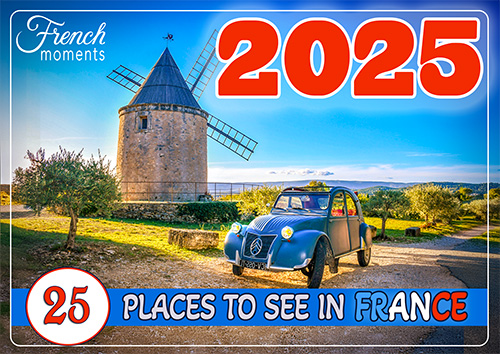The ship-shaped Ile de la Cité is the historical heart of Paris, known as Lutetia (Lutèce) during the Roman era. With its banks on the River Seine, it contributes to the romantic atmosphere of Paris, mainly when seen from Pont des Arts or Pont de la Tournelle.
The Ile de la Cité: a bit of History
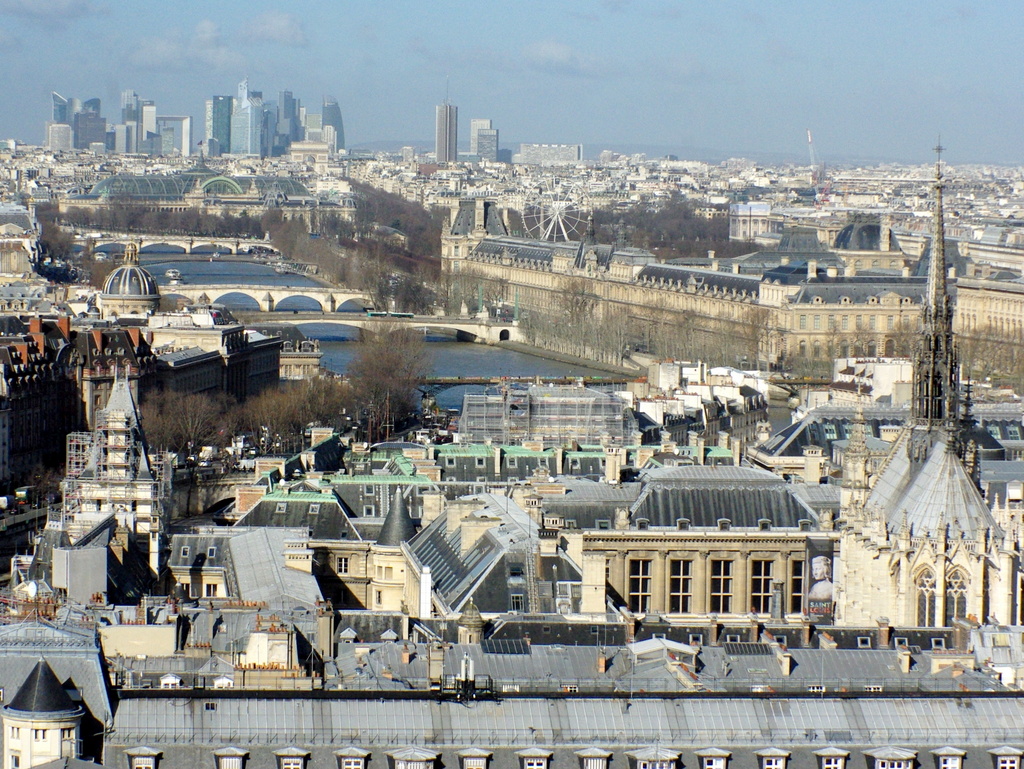
The history of the Ile de la Cité is closely linked to that of Paris, for it was there that a small Gallic people lived at the time of Julius Caesar. Known as the Parisii, the Celtic tribe inhabited the island Lutetia (Lutèce in French) and eventually gave its name to the town in 360 AD.
The history of Paris is, in turn, closely linked to the Seine River, which was at the time much broader and less deep than it is today. The River was a communication way that allowed a profitable trade to emerge. In addition, the island was ideally situated as it gave a convenient crossing of the Seine between the North and the South of Gaul.
From the tribe rose a powerful corporation which would play an extending role in the politics and economy of the city for many centuries to come: the Guild of the Boatmen (Nautes Parisiens). Gaining their wealth from river trade by charging tolls for the transportation of goods on the Seine, they accumulated so much power that the administration of the municipality of Paris was conferred to them in 1263. They gave Paris its coat of arms: a silver vessel which sails fiercely over the waters with the famous motto, “Fluctuat nec mergitur” (“She is tossed by the waves, but does not sink”).
The Roman presence in Lutetia remains beneath the parvis facing Notre Dame Cathedral, where a defensive Roman wall was discovered.
In the Middle Ages
In the 5th century, Clovis had a Merovingian Palace built in the Palais de la Cité location for his royal residence. The first cathedral of Paris was built by his son Childebert I, in the 6th century.

The first Kings of France contributed to making the island the home of royal authority, church and law. From the Middle Ages, the Ile de la Cité has kept three major medieval monuments: the Conciergerie, the Gothic Sainte-Chapelle and Notre Dame Cathedral.
The works by Haussmann
From the Middle Ages until the mid-19th century, the island was a maze of muddy and narrow streets. Only a few streets are a reminder of this era, which are found on the northeastern side of the island: the Cloître Notre-Dame, which includes Rue Chanoinesse, Rue des Ursins and Rue des Chantres.
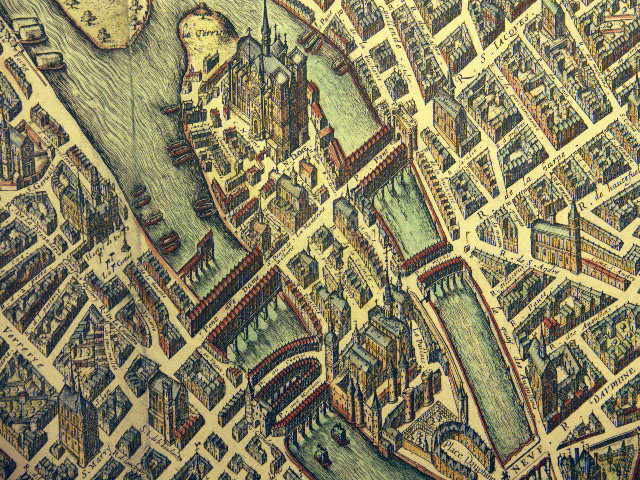
In the mid-19th century, Baron Haussmann radically removed the medieval aspect of the Île de la Cité by pulling down houses, hospitals and churches and opening wide avenues. From 43 streets existing in 1300, only 20 are numbered today.
Today, the Ile de la Cité remains the heart of Paris and all road distances in France are measured from the Point Zéro mark in the Place du Parvis de Notre-Dame.
Bridges connecting the Ile de la Cité
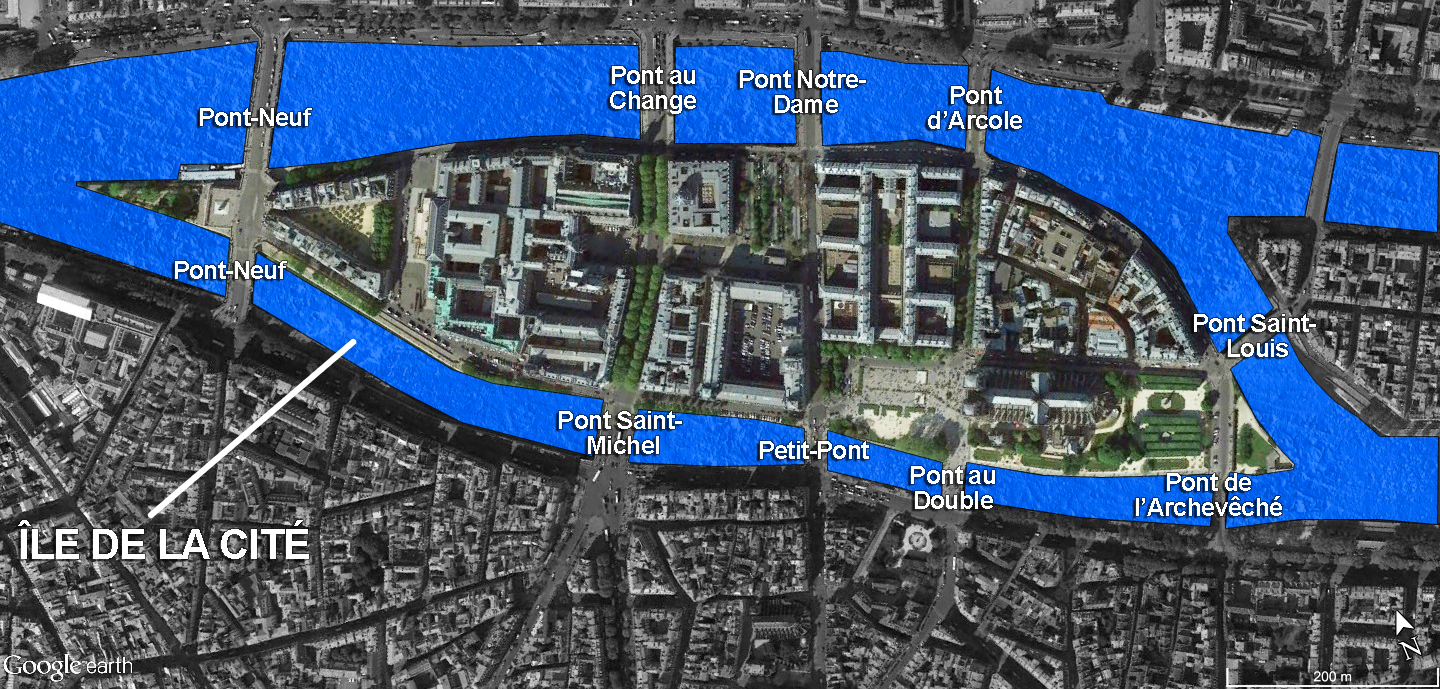
The Ile de la Cité and Île Saint-Louis are Paris’ two remaining natural islands in the Seine. The island is linked to the Right and Left Banks by eight bridges, and a ninth leads to the smaller Île Saint-Louis.
The Right Bank is linked by Pont-Neuf, Pont au Change, Pont Notre-Dame and Pont d’Arcole.

The Left Bank is linked by Pont-Neuf, Pont Saint-Michel, Petit-Pont, Pont au Double and Pont de l’Archevêché.
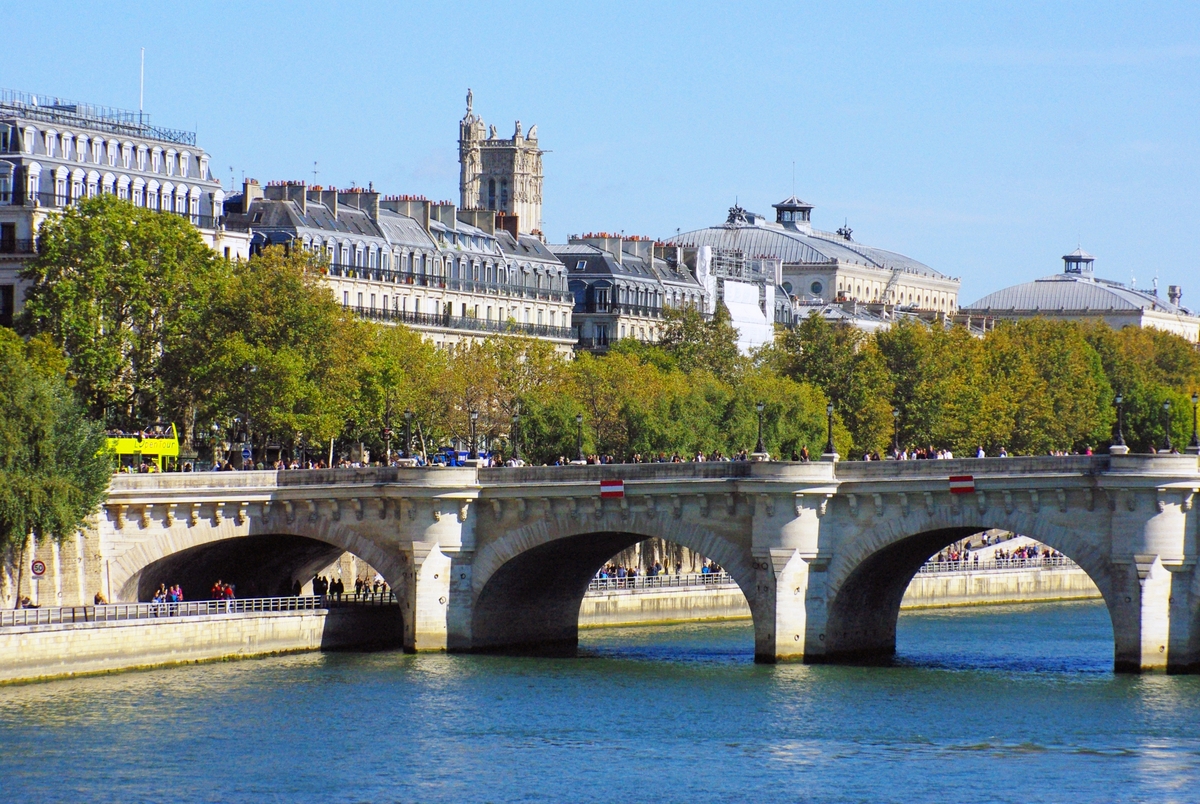
The Île Saint-Louis is linked by Pont Saint-Louis.

Monuments of the Ile de la Cité

The main monuments and landmarks on the Île de la Cité:
Notre Dame Cathedral
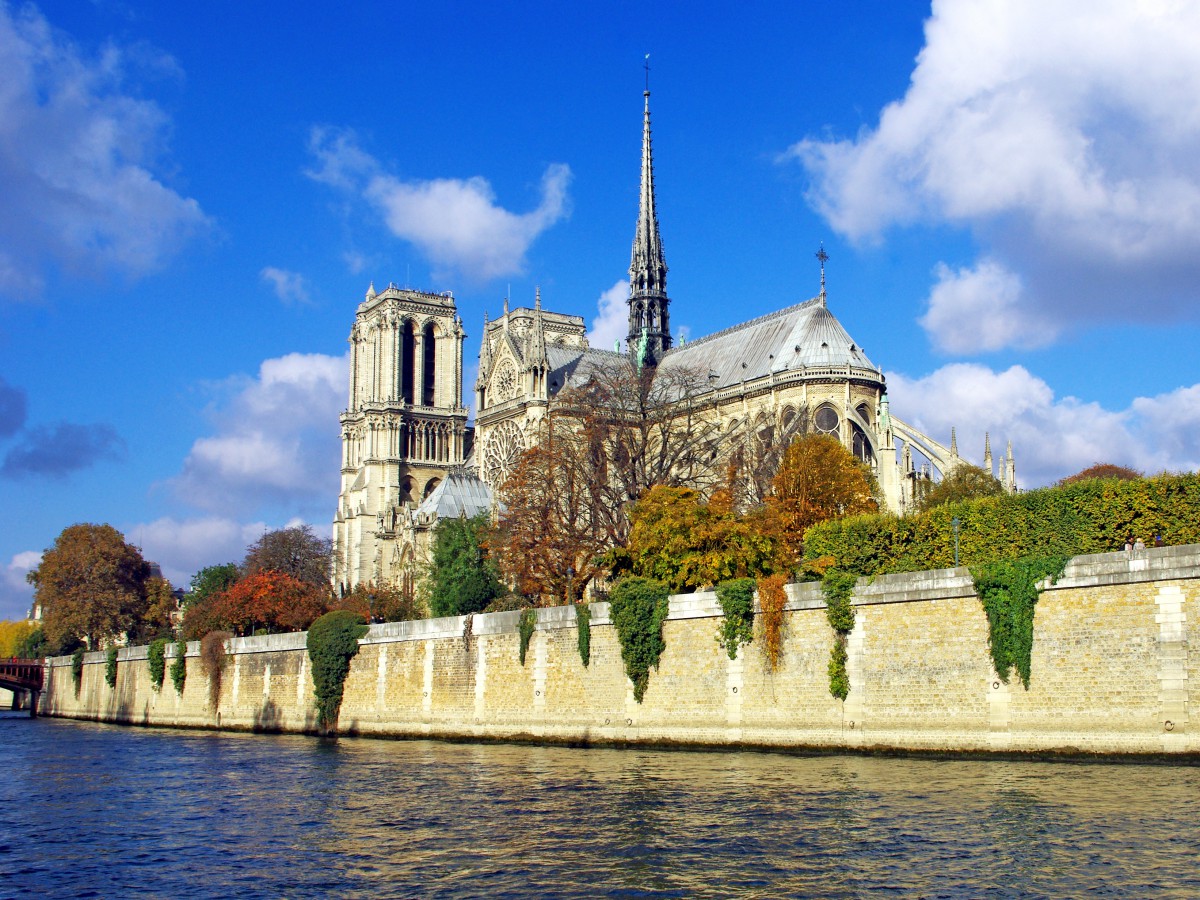
Palais de Justice
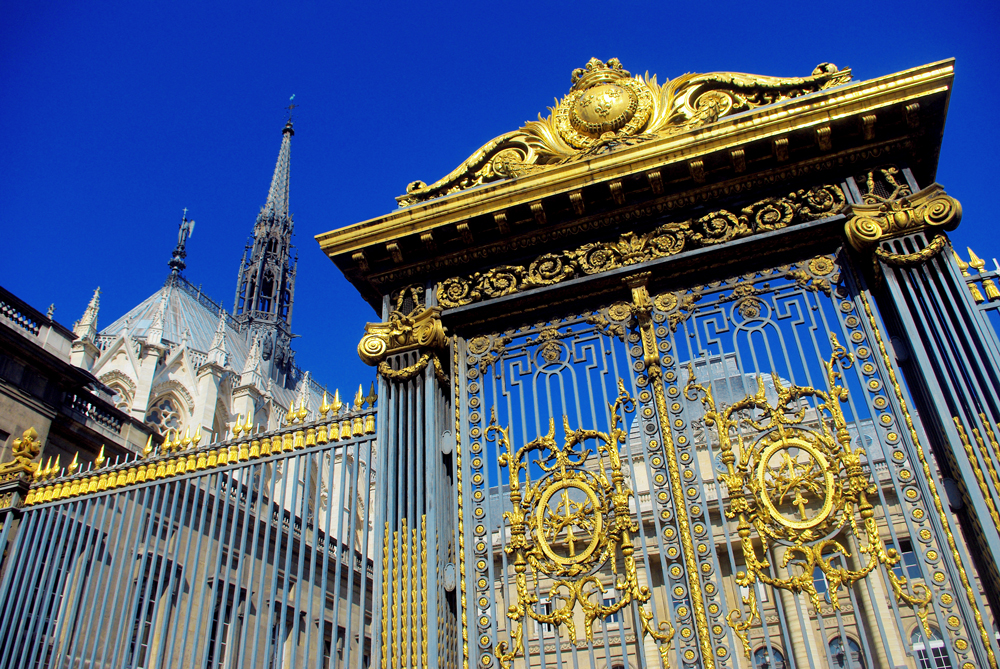
Conciergerie

Sainte-Chapelle
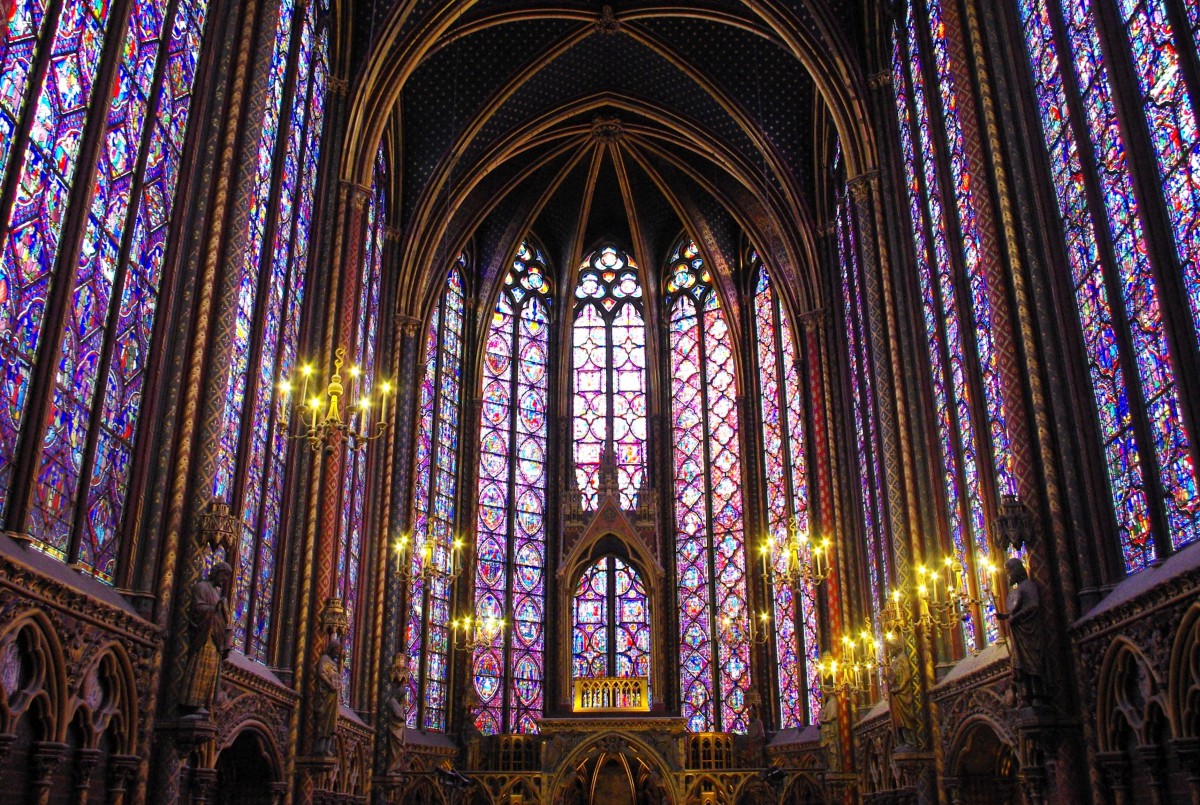
Marché aux fleurs et aux oiseaux

Tribunal de Commerce
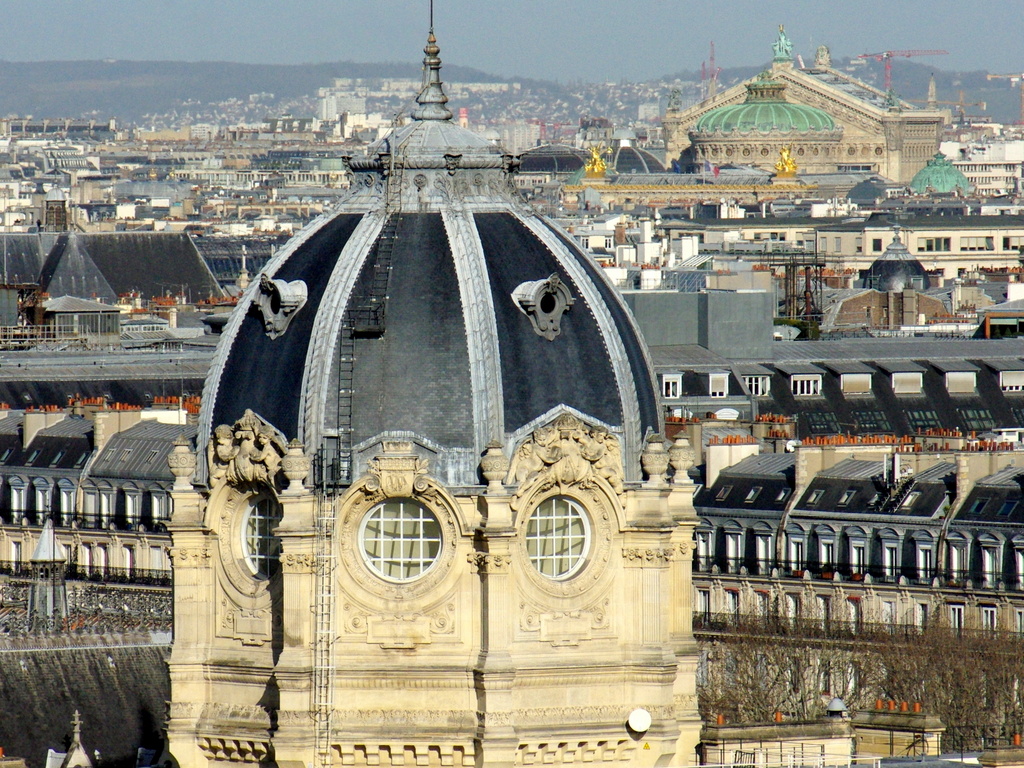
Préfecture de Police
Old district of Cloître Notre-Dame
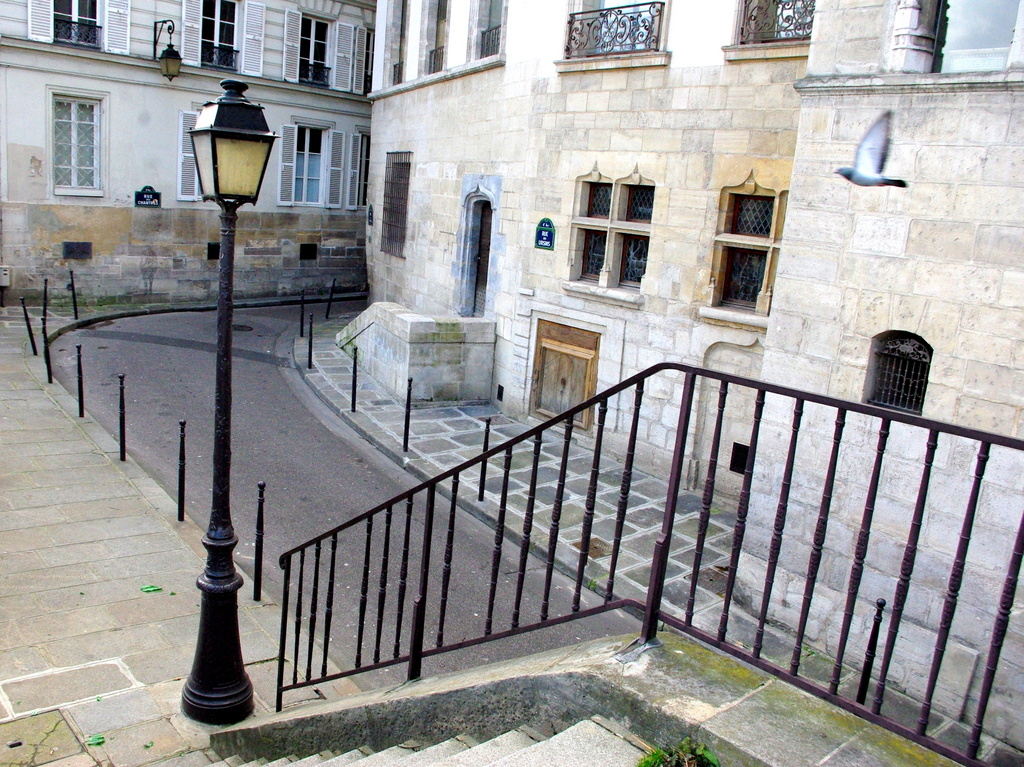
Squares and Parks

There are a few squares and parks in the Île de la Cité worth mentioning:
Place Jean-Paul II, formerly Place du Parvis
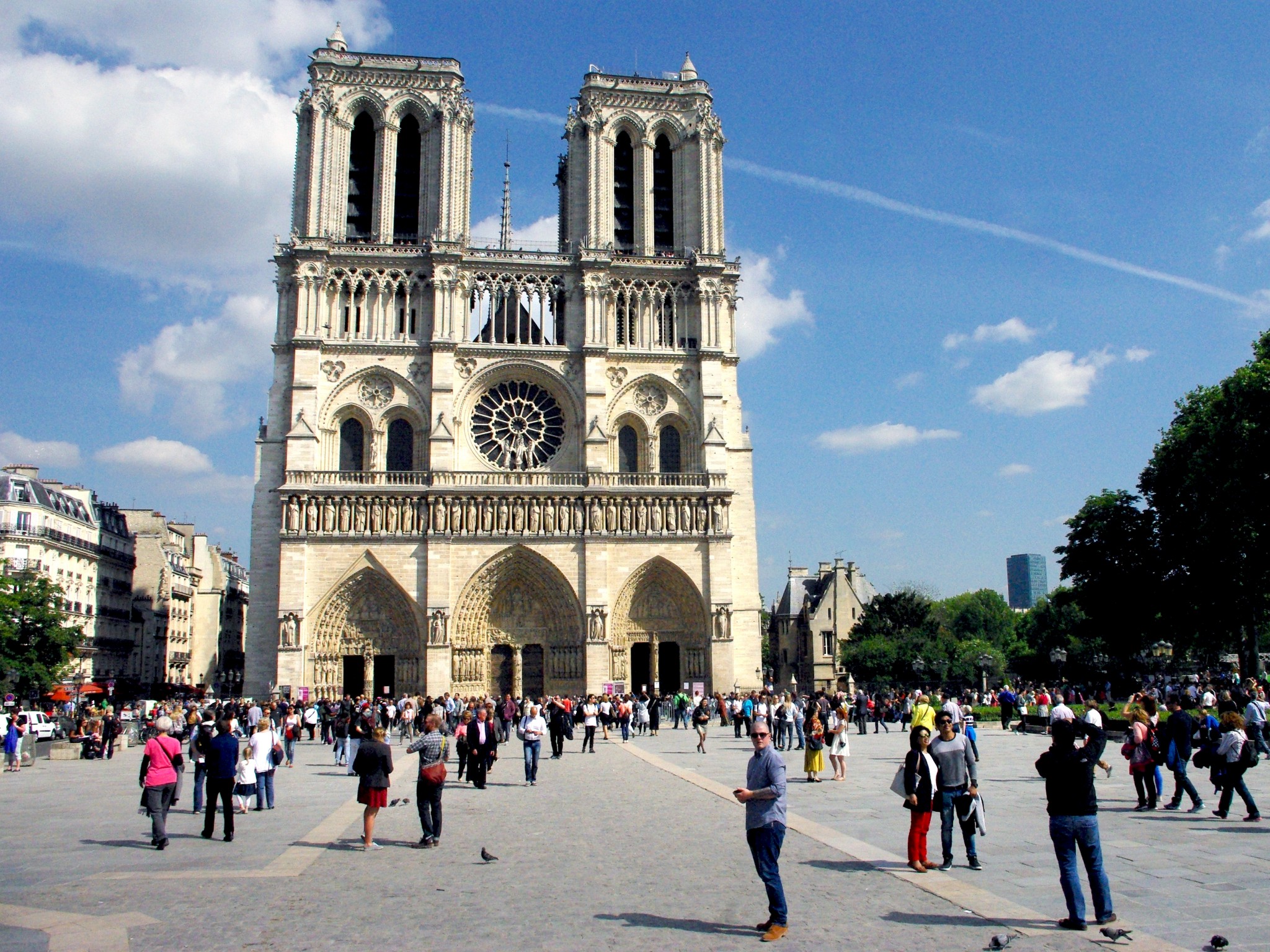
Place Dauphine
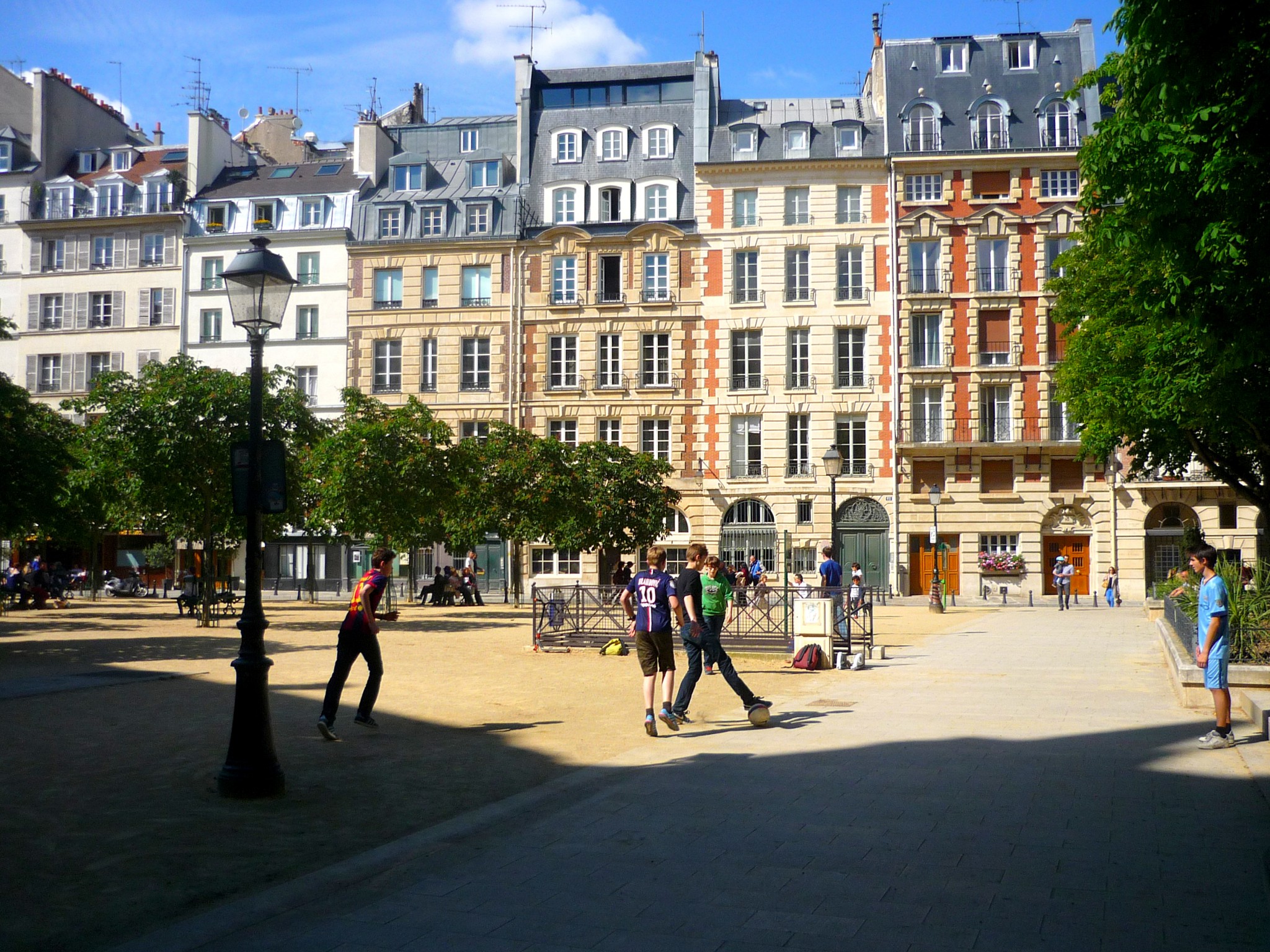
Place Louis Lépine
Square du Vert-Galant

Square Jean-XXIII
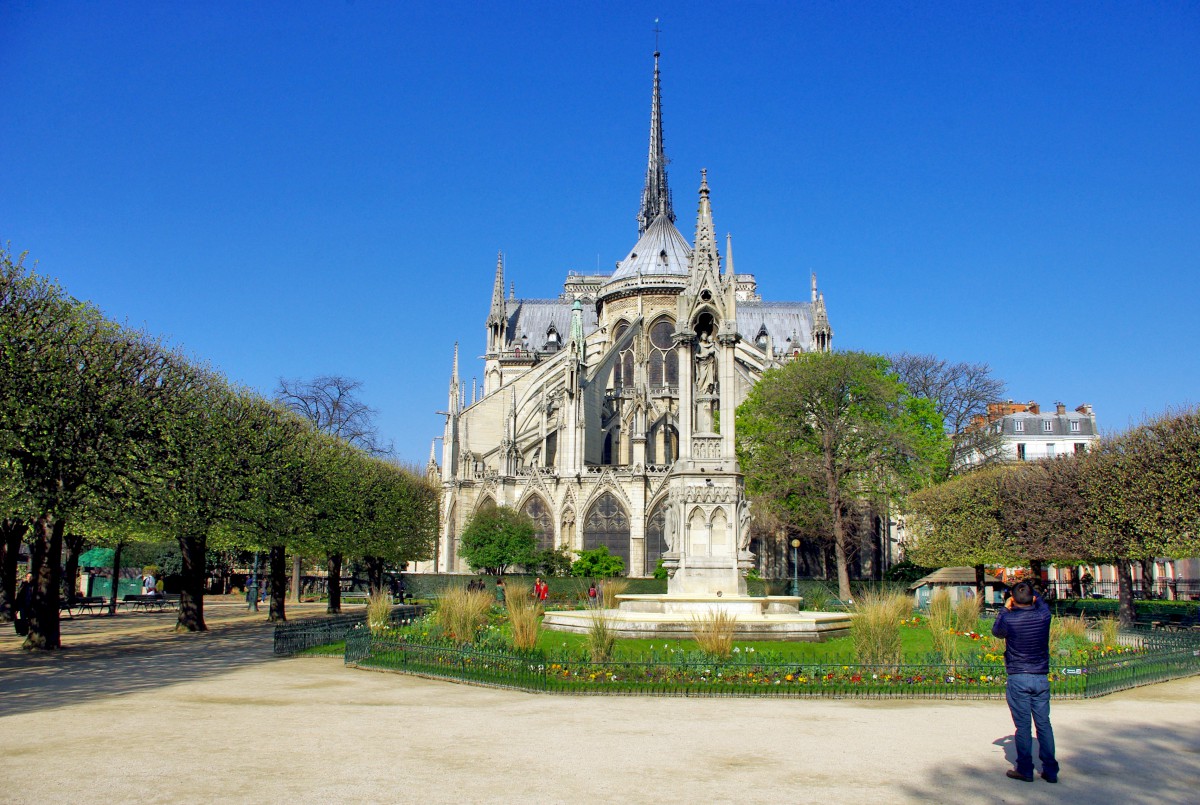
Square de l’Île de France
Jardin de la Place Jean-Paul II
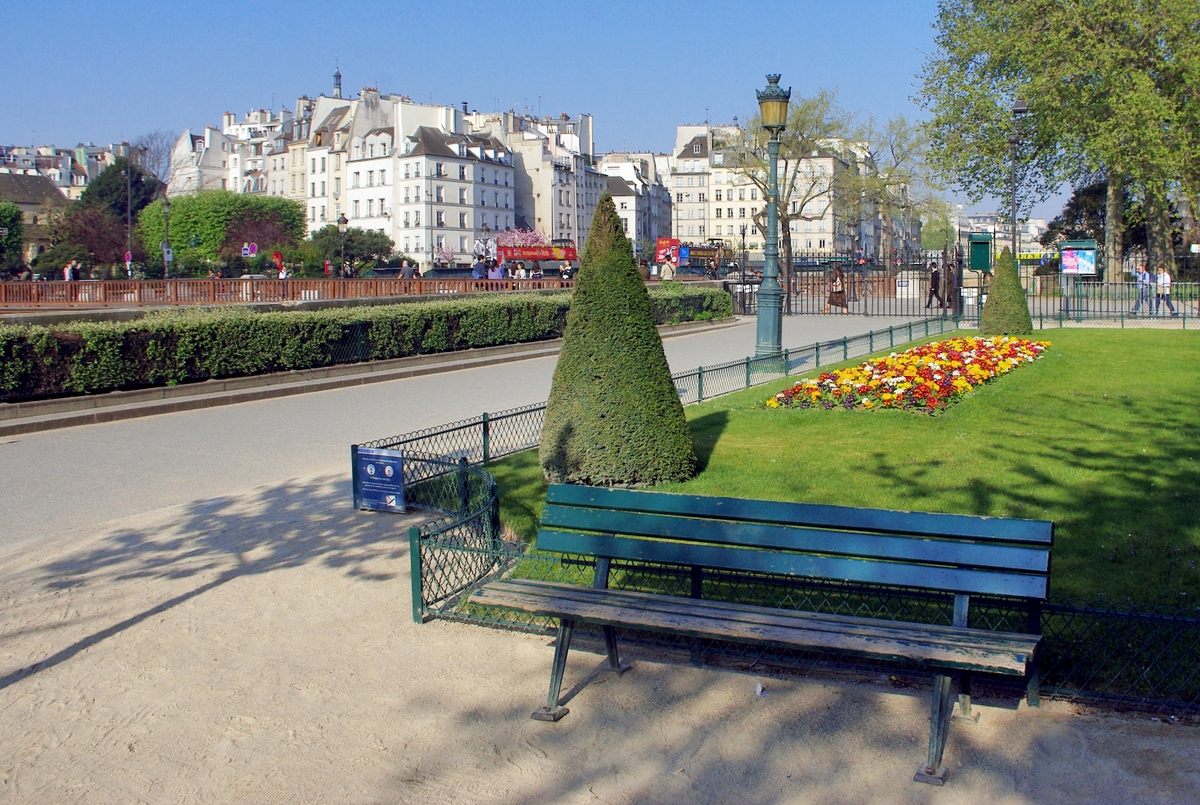
Find out more about Ile de la Cité
- Discover the Gothic Cathedral of Notre Dame
- Explore the Conciergerie
- Marvel at the Sainte-Chapelle
- Learn more about the Ile Saint-Louis
- Enter the secretive Place Dauphine
- Read more on the French Wikipedia
Access to the Ile de la Cité
The Ile de la Cité has one métro station called “Cité” (line 4). A number of métro stations are found on the banks of River Seine on the Left and Right Banks: Pont Neuf (line 7), Châtelet (lines 1, 4, 7, 14), Hôtel de Ville (line 1, 11), and Saint-Michel (line 4, RER B and C).




